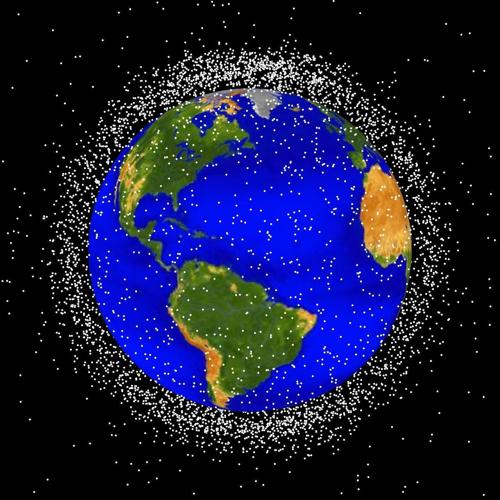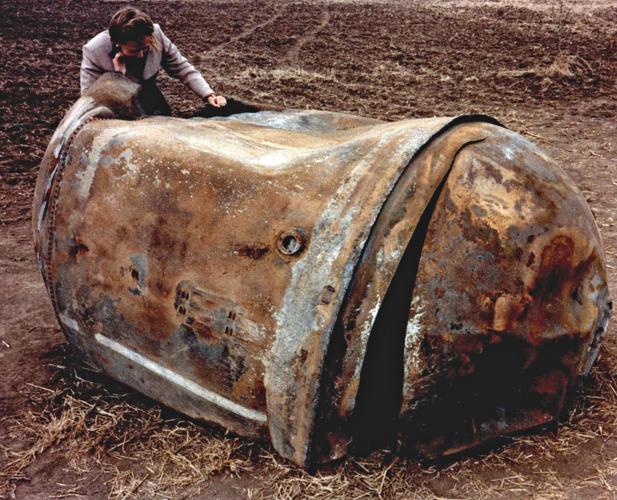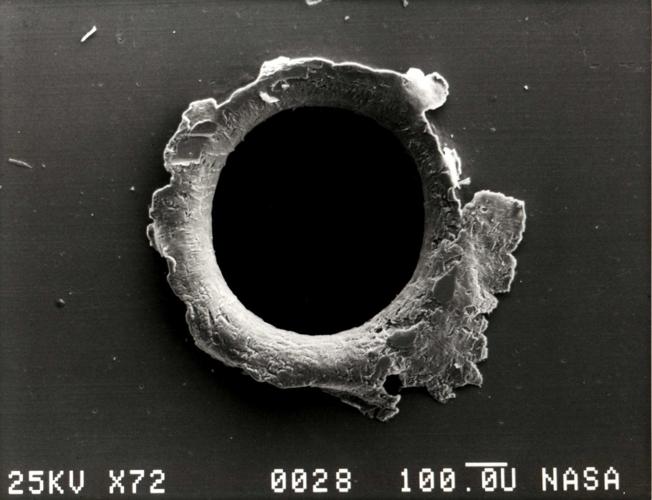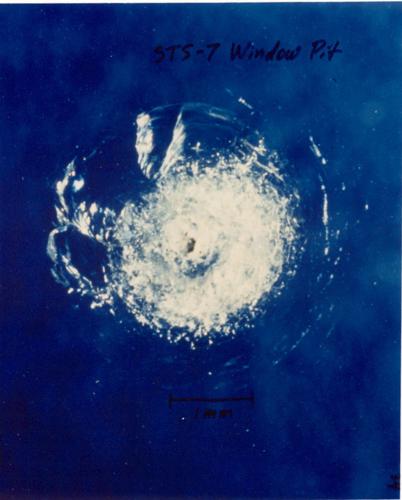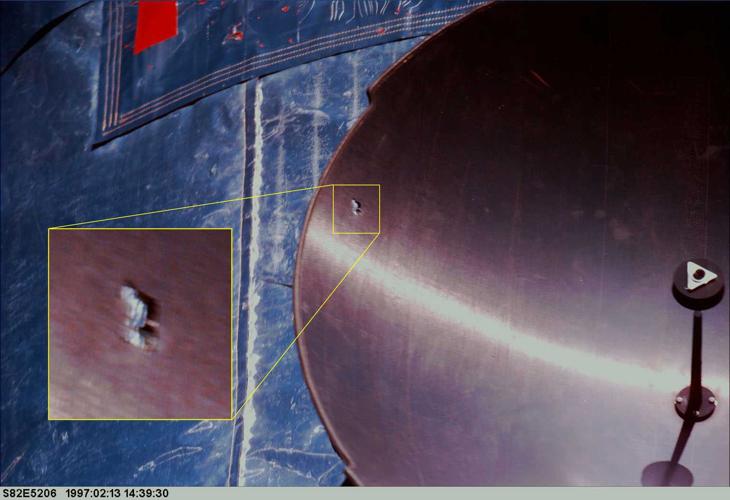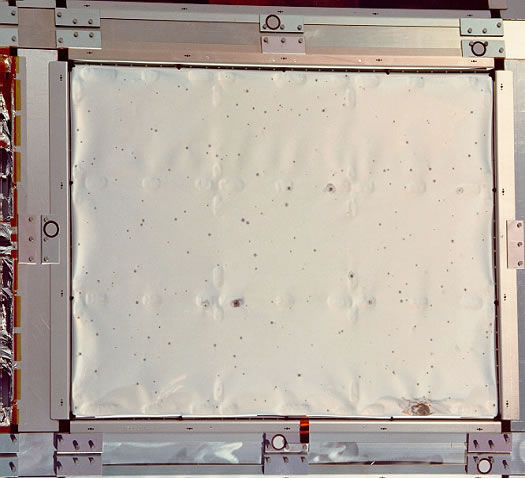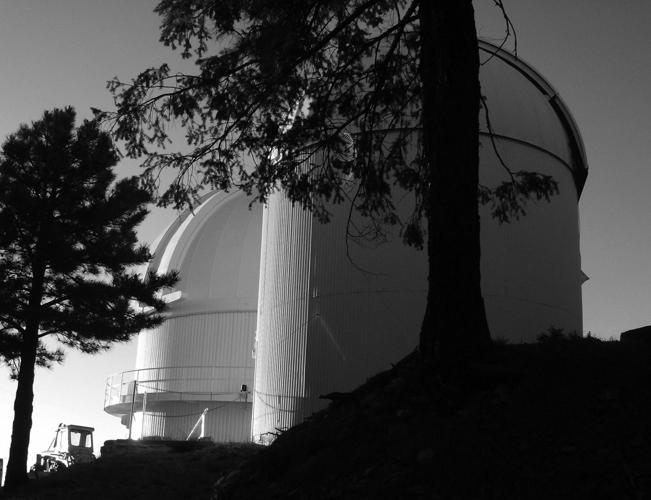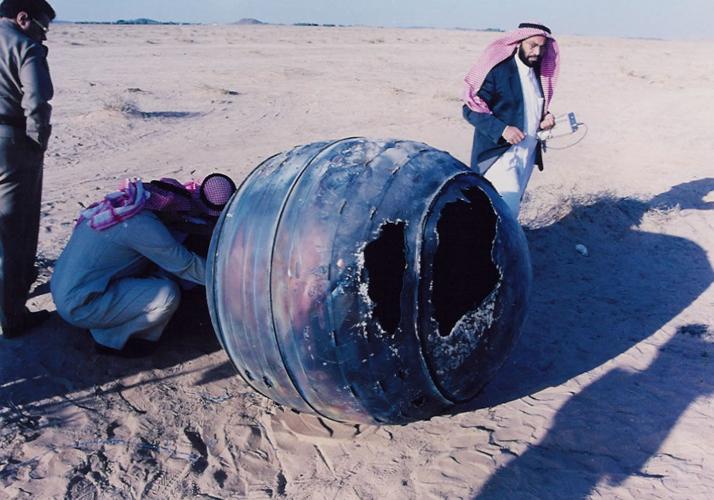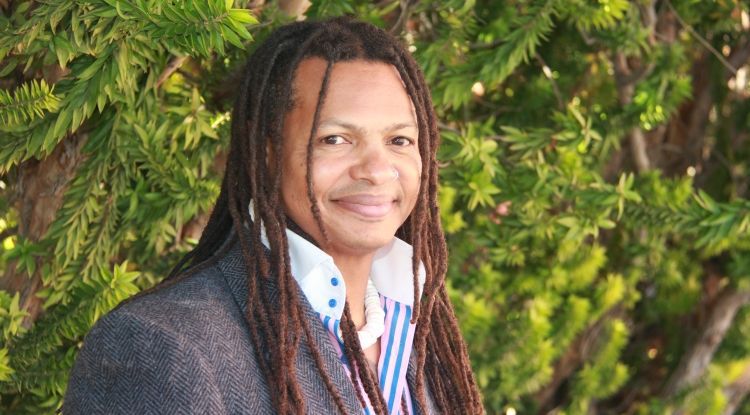In the 59 years since the Soviet Union launched Sputnik, world governments and space entrepreneurs have created an artificial asteroid belt around Earth.
NASA estimates that 23,000 intact satellites and pieces of them larger than a softball orbit Earth, in addition to 500,000 pieces in the nuts-and-bolts size and millions of even smaller particles.
A new center at the University of Arizona proposes to bring some order to the chaos with a systematic attempt to find as many objects as possible and classify them to determine which are debris and which are operable. They also want to know which are friend and which are foe — where they might be headed and what they might be doing.
The University of Arizona’s Space Objects Behavioral Science, SOBS, initiative seeks to marry the expertise and capability of various disciplines at the university to answer those questions and become the go-to center for all things orbital.
Low-Earth orbit, between 100 and 1,200 miles above Earth’s surface, is the most crowded place, as evidenced by damage done over the years — cracked windshields on Space Shuttles and pitted panels on the Hubble Space Telescope. Even the smallest particles can do damage at an orbital velocity of 17,500 mph.
The UA initiative is led by Moriba Jah, the first of a five-professor “cluster hire” underwritten by the office of Kimberly Espy, the UA senior vice president for research.
Jah, a former NASA navigator who helped guide four missions to Mars, has spent the past 10 years studying space debris, at the Air Force Advanced Sciences and Technology Research Institute for Astronautics, and as director of the space situational awareness program at Kirtland Air Force Base in Albuquerque.
Jah jokingly refers to himself as a “space garbage man.” His mission is not to collect the garbage in space but to quantify it, characterize it and catalog it.
He talks about creating a “taxonomy” of space objects — “put a first name and a last name to every possible object, then start saying: ‘How can we classify these things? What patterns can we start discovering? What are the risks and what are the hazards?’”
Jah wants to involve the UA in creating a cyber-infrastructure that manages data from an array of sensors.
He’s connected, says Espy, to the agencies and industries that could become clients for the UA’s new research.
“He’s an amazing guy with incredible talents and he’s very well connected to both the astronomical community and the defense community,” Espy said.
The defense department would be an important client for the UA’s fledgling program. It accounted for 90 percent of federal spending on “space situational awareness,” according to a 2016 report by the General Accounting Office.
That broadening of sources for astronomical and planetary research would aid in the university’s and his own “Panda problem,” said astronomer Vishnu Reddy.
Pandas live and forage only in the shrinking habitat of bamboo forests, Reddy said. Most planetary scientists, likewise, are dependent on a single source — NASA — for their sustenance. “Just like pandas we eat bamboo and we live in one valley. We are not diverse enough to survive a fluctuating funding environment.”
Reddy, who went to work for the SOBS initiative in August, has built his career studying “natural” satellites — near-Earth objects such as asteroids and comets that have potential to collide catastrophically with the Earth’s surface, working with NASA grants through the Tucson-based Planetary Science Institute.
His new role at the UA, where he is an assistant professor of lunar and planetary sciences, will be to characterize man-made space objects, an expertise he now uses to determine the composition and parentage of natural space rocks. He said he originally thought: “These are moving things and they are closer to the Earth. How difficult can it be?”
He’s coming to realize that analyzing natural satellites such as asteroids and comets is easy compared to figuring out the behavior and composition of artificial ones.
Asteroids and comets follow long orbits into deep space before circling back toward Earth. Once you find and observe them for a bit, you can predict where they will be next year or 100 years from now. Operational satellites can change course and orientation. Debris can collide and make more debris. Orbits can degrade and things can fall out of the sky.
There is also a fear that some nations have deployed satellites whose purpose is to eavesdrop, disrupt or disable other nations’ satellites.
Eric Pearce, a professor of astronomy at Steward Observatory, has spent most of his career on space surveillance work. He worked 25 years at MIT’s Lincoln Laboratory, which, for a time, was the world’s most prolific discoverer of near-Earth objects. Then he helped develop and run a 3.5-meter Space Surveillance Telescope for DARPA, the Defense Advanced Research Projects Agency.
Proliferation of space junk is a problem, Pearce said, especially in near-Earth orbit, where critical programs such as the space station and the Hubble Telescope operate in a growing sea of spent rocket bodies, defunct satellites, lens covers, nuts, bolts and paint flecks.
“The other hazard, more compelling, is the proliferation of noncooperative actors in space. There is a real threat that people are messing with each other’s assets in space. We need awareness to defend that and to encourage others not to do that.” Pearce said.
One of Pearce’s first tasks is to build a three-color, high-speed photometer that will record light from an object at speeds of thousandths of a second, in order to determine the exact composition of objects in space.
“It’s like when you’re driving around at sunset, and catch a glint off a windshield or a building. In that moment, you can isolate that surface so you can study it. In that instant in time, you can learn how flat it is, what color it is and begin to decipher what’s what as you dig deeper.”
Astronomer and optical scientist Michael Hart has his own experimental approach to “fast-framing” of objects in space by observing their acoustical resonances. “It’s a new type of instrument that will exploit a technique called hyper-temporal imaging,” Hart said. Like Pearce’s instrument, it would be capable of determining the exact dimensions and composition of objects in orbit.
Both Hart and Pearce plan to test their new instruments on the 61-inch telescope run by Steward Observatory below Mount Bigelow in the Santa Catalina Mountains north of Tucson.
In addition to Bigelow, Steward operates telescopes on four other Arizona mountaintops — Mount Lemmon, Kitt Peak, Mount Hopkins and Mount Graham. It also operates telescopes in Chile and Hawaii, some of which are already being used for NASA space debris programs.
Espy said the availability of telescopes and the expertise to operate and adapt them to new uses is a big selling point in the UA’s bid to become a worldwide center for space surveillance.
“This is so much in our ‘sweet spot,’ you almost wonder why we weren’t doing it before,” she said.
Espy said the Lunar and Planetary Lab has been honing techniques for satellite detection and characterization for decades with its SpaceWatch and Catalina Sky Survey programs, which focused on natural satellites of Earth.
There is no guarantee that it will accomplish its grand vision for the initiative, she said. “Research is always about making big bets. You never know, there are probably four or five teams working on the same problem and they may beat us to the punch, but this is a great opportunity for continuing to expand the folks we serve, particularly with the intersection of astronomy and the defense community.”
Tim Swindle, director of UA Lunar and Planetary Lab, said his department gets “a large fraction” of its funding from NASA’s Science Mission Directorate, which directs the agency’s space missions and earth science. “We don’t do much of anything outside that pond and we’re trying to expand, to be relevant.”
He expects his lab’s expertise in tracking asteroids will contribute value to the project and that the project’s partners in other fields can teach them as well. The project is housed in the UA’s Defense and Security Research Institute and includes participants from the College of Optical Sciences, two UA engineering schools and CyVerse, the super-computing portal housed at the Bio5 Research Institute.
Swindle said the collaborations could make LPL better at doing what it already does. “It could help us find asteroids. It’s a logical extension of what we do and a way to help us do what we do.”
Buell Jannuzi, director of Steward Observatory and the Department of Astronomy, said that cross-pollination creates opportunity for new approaches. “Eric Pearce and Vishnu Reddy both do astronomy, but also use astronomical techniques in solving other interesting problems. This is how you get innovation when people get inspired to solve a new problem with something from another field,” Jannuzi said.
Over at the College of Optical Sciences, Michael Hart is not officially part of the SOBS initiative, but he is building his new instrument with money supplied by Espy’s office from the Arizona Board of Regents Technology and Research Initiative Fund. He is one of three UA professors who proposed the “cluster hire” that became SOBS.
“I have been pushing this general idea that the university should get involved in looking at artificial things in space for the better part of a decade,” he said.
It’s both a “fascinating field of research” and a way of applying research for the national good, he said.
“Our modern technological life depends to a large extent on maintaining capabilities in space — Google maps, weather forecasting, banking, air-traffic control, communications, GPS. I would have been lost in the wilderness several times if it wasn’t for those satellites. We have paid far too little attention to the side effects of our use of space and to the safety of the capabilities that we rely on,” Hart said.
Reddy recounts the scene from the movie “Gravity” to describe the potential danger. In it, a crew servicing the Hubble Space Telescope is hit by a wave of space debris that has been growing exponentially as it takes out satellite after satellite, creating more debris as it expands.
It’s known as the Kessler effect, proposed in a 1978 research paper by NASA scientist Donald J. Kessler. “If the density of the debris in Earth orbit becomes so high, every debris-creating event will cascade into creating more debris. Eventually, you can’t leave the Earth without hitting something,” Reddy said.
For now, the big pieces of space garbage, while not few, are far between. There is a lot of space out there. Still, debris crashes occur a few times a year and the International Space Station has had to take “avoidance maneuvers” 20 times in its 18 years of orbits, according to NASA. Propulsion tanks explode. Things fall apart.
Things are a bit quieter up in geosynchronous orbit, more than 22,000 miles above Earth’s surface where a smaller number of the most expensive satellites orbit at the same speed and in the same direction as the Earth’s rotation. They are always overhead and ready to relay your important text messages. But the geosynchronous orbit, above the Earth’s protective magnetic fields, is a hostile radiation environment. Things fall apart there as well.
Over the years, countries that operate in space have gotten better about not creating space junk, said Eric Pearce, making sure that pop-off parts like lens caps are tethered to the satellite and planning for end-of-life deployment to a “graveyard orbit.”
“Good behavior” and waiting for low-Earth orbit to clean itself as orbits decay and Earth’s gravity pulls the satellites home, may be the best we can do for now.
“That’s been a debate for a long time. Do you avoid it, clean it up, or don’t make it in the first place and wait for the environment to clean itself up.”
Scientists across the world are working on ways to clean up space, but that task will be extremely difficult, if not impossible, said Pearce.
“It’s very hard to just cruise up next to something,” said Pearce. A space garbage truck would need an enormous propulsion capacity to do that kind of stop-and-go driving.
Some scientists propose slowing the orbits of space debris with lasers, but Hart, who has built laser guide-star devices for large telescopes, says that is probably impossible. You would have to track and hit the object repeatedly to have even a small effect.
Meanwhile, space continues to get more crowded. Reddy compares it to a freeway with on-ramps and no exits, where people simply abandon their cars when they run out of gas or run into something.


